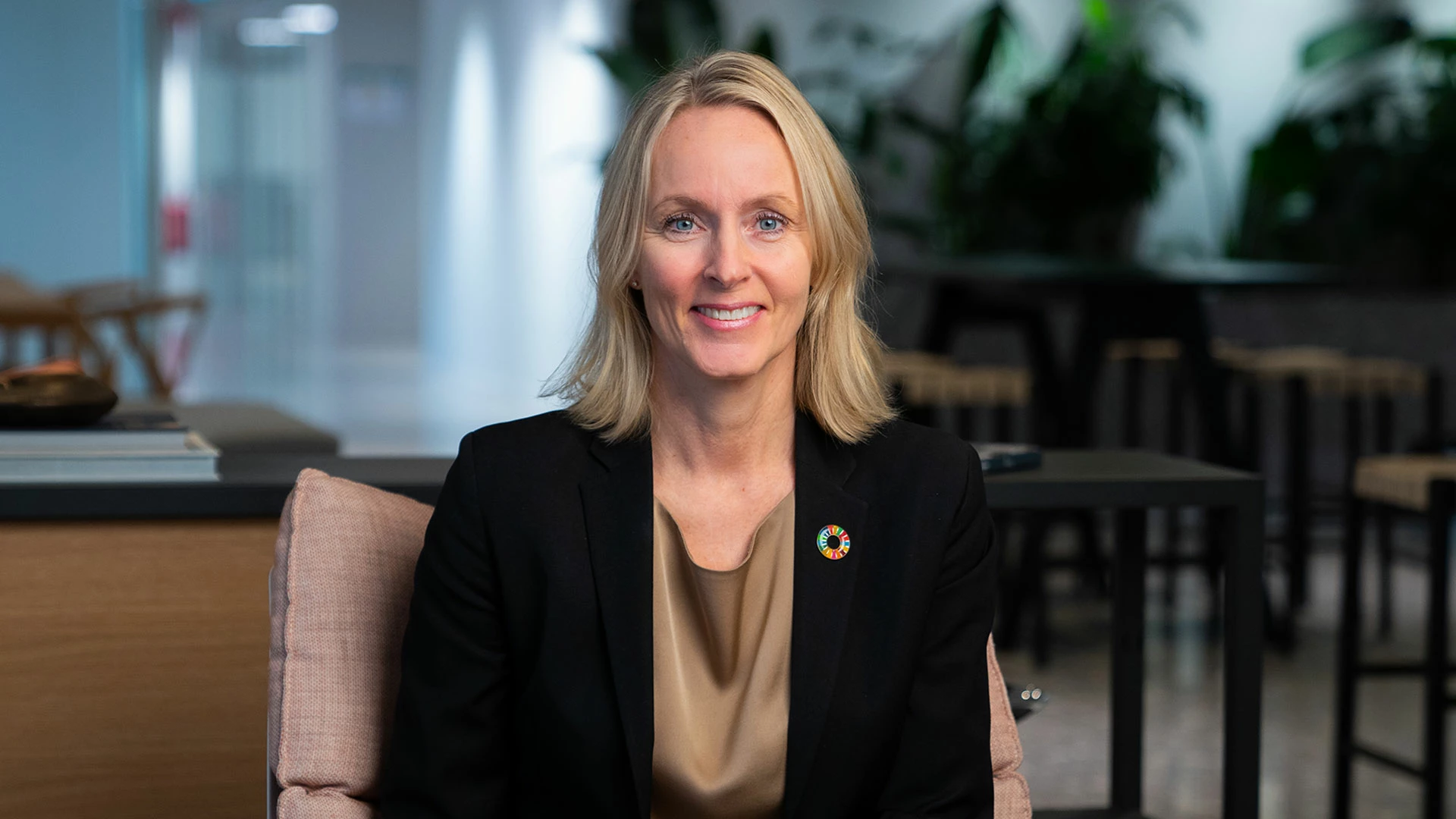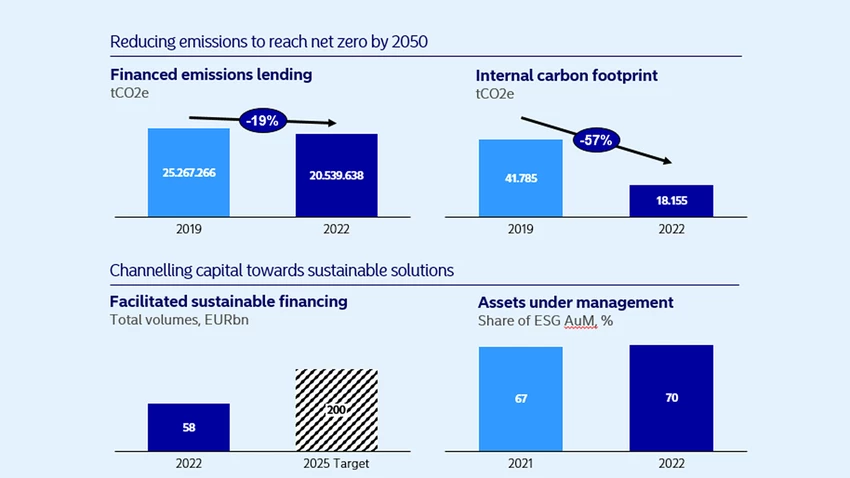What are financed emissions?
Financed emissions are the indirect greenhouse gas emissions generated by our lending and investment activities. Collecting and quantifying financed emissions is a way to integrate sustainability into the core business.
At Nordea, we’ve committed to becoming a bank with net-zero emissions by 2050 at the latest. To maintain the momentum in this transition, we have set targets for 2023 and 2025, and a mid-term objective for 2030. Now, with less than a year until the end of 2023, we’ve invited head of Group Sustainability Anja Lidgren Hannerz to a talk about Nordea’s progress.

“Yes, we’re seeing good progress towards targets thanks to great collaboration across the bank. Our mid-term objective is to reduce emissions across investment and lending portfolios by 40-50%, and our financed emissions in the lending book are down 19% from 2019, so we’re on a good path. A key driver for this has been our large corporates, where emissions are down by 36%. There are many contributing factors, including our reduction in financing of oil, gas and offshore companies by more than 70% since 2019.
Financed emissions are the indirect greenhouse gas emissions generated by our lending and investment activities. Collecting and quantifying financed emissions is a way to integrate sustainability into the core business.
"By engaging and working with our customers on their transition plans we believe that we can make a positive contribution in society. As of now, well over half of our large corporates in those sectors have set a timebound target for reducing emissions from their operations, which is good progress, but there is still more work to be done and customers are at different levels of maturity.
“During 2022 we took part in facilitating 58 billion euros of sustainable financing, placing us on track to reach our target and we’re constantly engaging with our customers to understand their challenges and provide them with the right financing solution. We offer solid access to green and sustainability-linked loans as well as green, social and sustainability-linked bonds. Lately we have also introduced an offering for small and medium-sized businesses together with the European Investment Fund.”
By engaging and working with our customers on their transition plans we believe that we can make a positive contribution in society.
“We want one third of our savings gross inflow to be in our Sustainable Choice product range, and by the end of last year we were at 22%, so we’re not too far from our target. During the year we supported more than 2,800 green mortgage borrowers with 768 million euros, and we’re also offering discounted lending for energy renovations in Denmark, Finland and Sweden so our customers can reduce their electricity and heating costs. With the current energy crisis, such offerings are highly relevant and we will continue to support our customers in energy optimising their homes to reduce their emissions and costs.”
“In this area, we also have positive development. Let’s take Nordea Life & Pension with their target to reduce the carbon footprint from their listed equity, corporate bond and real estate portfolios by at least 25% by the end of 2024 compared to 2019. They are progressing very well. By the end of 2022 the reduction was 28%, which is better than the target.”
“Another positive example comes from Nordea Asset Management and the companies we invest in via them. By 2025 we want 80% of the top 200 high emission companies to be either aligned with the Paris Agreement or subject to active engagement to become aligned. As of now, 75% are in that category.”
“We have targets on social responsibility related to gender balance and equal treatment and during 2023 we will broaden the scope. For instance, we will be working even more on developing our human rights assessments as part of the corporate customer due diligence. We will also continue to push for social responsibility in the companies we have invested in and via the many responsible banking initiatives we’re part of. But we will still have a firm focus on climate and environment to ultimately become a net-zero emissions bank, which is our long-term objective.”


Sustainable banking
Morningstar Sustainalytics has recently published a new report identifying companies that are taking steps to reduce emissions, set actionable targets and implement good governance practices. Nordea is highlighted for its significant progress in reducing emissions and its comprehensive climate targets.
Read more
Sustainability
Amid geopolitical tensions and fractured global cooperation, Nordic companies are not retreating from their climate ambitions. Our Equities ESG Research team’s annual review shows stronger commitments and measurable progress on emissions reductions.
Read more
Sector insights
As Europe shifts towards strategic autonomy in critical resources, Nordic companies are uniquely positioned to lead. Learn how Nordic companies stand to gain in this new era of managed openness and resource security.
Read more